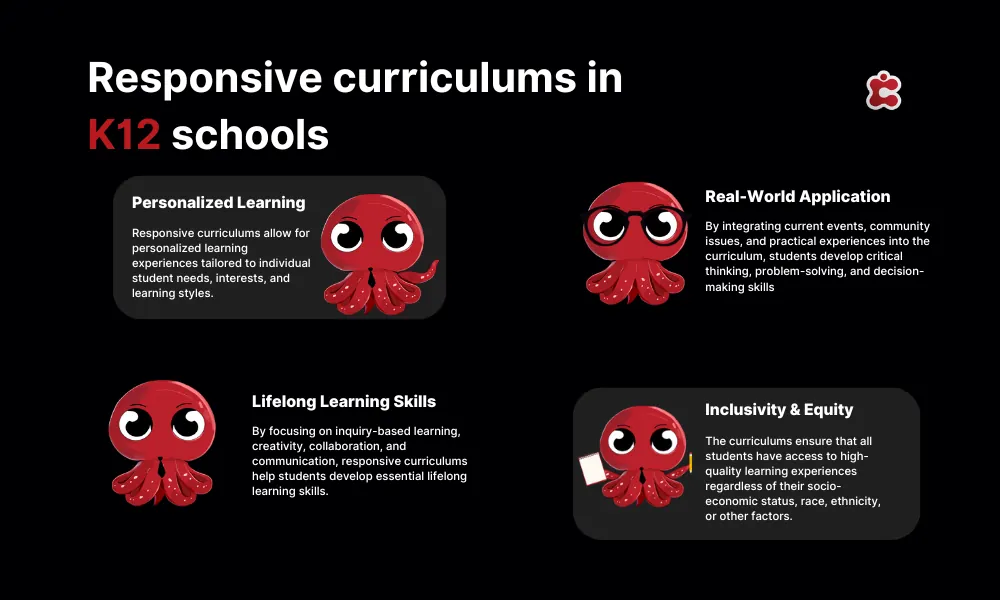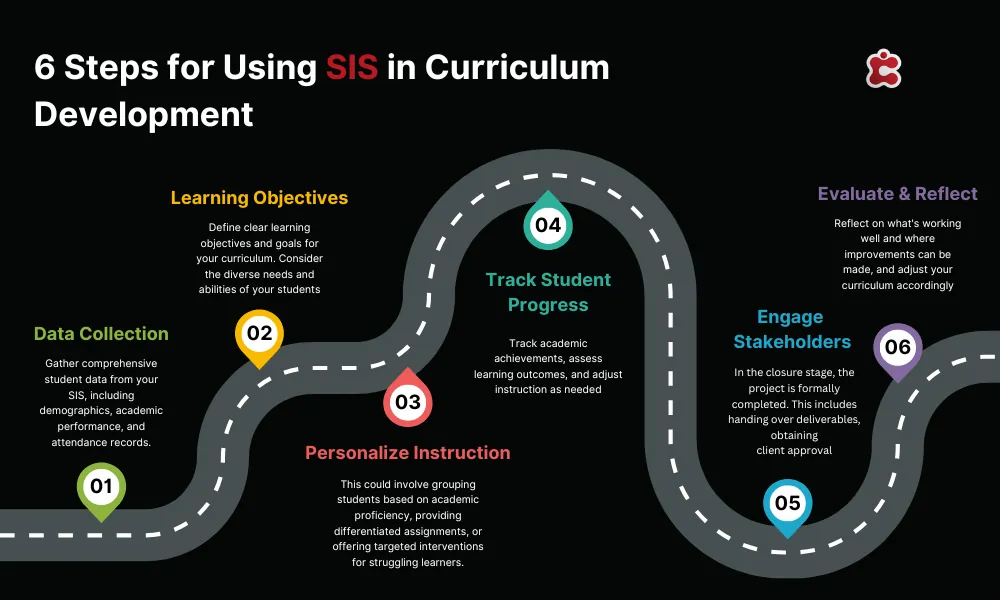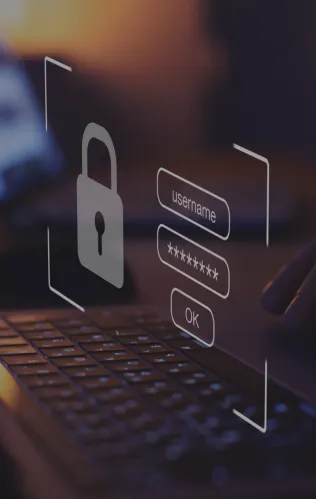When it comes to learning, one size certainly doesn’t fit all. With diverse student populations bringing unique learning needs to the table, the demand for adaptable, student-centered approaches has never been more pressing. This is why creating responsive curriculums in K12 education is a necessity.
But how exactly do we navigate this shift from traditional, one-size-fits-all approaches to more personalized learning experiences? And what role do Student Information Systems (SIS) play in this educational transformation?
Student Information Systems are powerful tools designed to manage student data and streamline administrative tasks. But these systems are not just about paperwork and records; they hold the key to unlocking a more personalized, inclusive approach to learning.
Now, institutions can learn how to leverage their power to implement strategies, analyze data, and tailor educational content to meet the specific needs of each student. Learn how you unlock the full potential of SIS in creating responsive curriculums and inclusive education.

Understanding Responsive Curriculums in K12 Education
Responsive curriculums are dynamic educational frameworks designed to adapt and cater to the diverse needs of students. Unlike traditional, one-size-fits-all approaches, responsive curriculums prioritize flexibility, personalization, and inclusivity. These curriculums are not static blueprints but living documents that evolve based on student feedback, assessment data, and emerging trends. By prioritizing flexibility and personalization, responsive curriculums create a more inclusive learning environment.
- Cater to Diverse Learning Styles: Responsive curriculums acknowledge that students learn in varied ways and at different paces, allowing educators to tailor instruction to meet individual needs.
- Embrace Student Interests: By integrating students’ interests and passions into the curriculum, educators can increase engagement and motivation, making learning more meaningful and relevant.
- Address Varying Abilities: Whether students are gifted learners, English language learners, or have unique learning needs, responsive curriculums ensure that all students have access to appropriate challenges and support.
- Promote Equity: Responsive curriculums prioritize equity by providing every student with the resources and opportunities they need to succeed, regardless of background or circumstance.
Leveraging SIS to Create Responsive Curriculums
Technology is becoming increasingly integrated into the framework of education. And Student Information Systems emerge as powerful allies in the quest for responsive and student-centered curriculums. So, how exactly do these systems transform raw data into actionable insights that shape the educational landscape?
SIS platforms serve as repositories of invaluable student information, offering comprehensive snapshots of demographics, academic progress, and attendance records. By tapping into this wealth of data, educators gain a deeper understanding of each student’s unique background, challenges, and potential.
Armed with SIS data, educators can navigate curriculum development with precision and purpose. They can analyze trends, identify learning gaps, and assess student performance. With this data, teachers can tailor instructional strategies to meet the evolving needs of their classrooms. The curriculum can be adjusted to pacing guides, relevant resources, or designing targeted interventions. SIS data provides the roadmap for responsive curriculum design.
Across K12 schools, examples abound of how SIS has revolutionized teaching and learning. From personalized learning pathways to data-driven interventions that close achievement gaps, SIS empowers educators to craft dynamic, student-centered experiences.

Steps for Using SIS in Curriculum Development
Harnessing the power of Student Information Systems (SIS) in curriculum development can be a game-changer for K12 schools. Here’s how educators and administrators can leverage SIS to create dynamic curriculums tailored to the diverse needs of students:
1. Start by gathering comprehensive student data from your SIS, including demographics, academic performance, and attendance records. Analyze this data to identify trends, patterns, and areas for improvement, such as learning gaps or student engagement levels.
2. Based on your data analysis, define clear learning objectives and goals for your curriculum. Consider the diverse needs and abilities of your students, as well as any specific challenges or areas of focus that have emerged from the data.
3. Use SIS data to personalize instruction and learning activities to meet the individual needs of students. This could involve grouping students based on academic proficiency, providing differentiated assignments, or offering targeted interventions for struggling learners.
4. Continuously monitor student progress and performance using your SIS. Track academic achievements, assess learning outcomes, and adjust instruction as needed to ensure all students are on the path to success.
5. Promote collaboration and communication among educators, administrators, and other stakeholders involved in curriculum development. Use SIS features such as data sharing and reporting tools to facilitate collaboration and ensure everyone is aligned with the goals of the curriculum.
6. Regularly evaluate the effectiveness of your curriculum using data from your SIS. Reflect on what’s working well and where improvements can be made, and adjust your curriculum accordingly to better meet the needs of your students.
Challenges and ConsiderationsChallenges and Considerations
Like with any technology integration, implementing Student Information Systems in curriculum development comes with its set of challenges and considerations. However, with careful planning and proactive strategies, these hurdles can be overcome.
Data privacy is paramount when dealing with sensitive student information. Schools must establish clear protocols and procedures to safeguard student data, ensuring compliance with privacy regulations such as FERPA (Family Educational Rights and Privacy Act). Implementing robust data security measures, including encryption and access controls, can mitigate the risk of unauthorized access or data breaches.
Technical challenges, such as compatibility issues or software glitches, can disrupt the smooth operation of SIS platforms. To address this, schools should invest in reliable infrastructure and work closely with IT professionals to troubleshoot technical issues promptly. Providing ongoing technical support and training for staff can also help build confidence in using SIS effectively.
Educators and administrators may require training to fully leverage the capabilities of SIS in curriculum development. Offering comprehensive professional development opportunities, including workshops and online courses, can enhance staff proficiency in using SIS tools for data analysis, curriculum planning, and personalized instruction.
Classter’s Student Information Systems
At Classter, we understand the pivotal role that Student Information Systems play in shaping modern education. Our SIS is more than just a data management tool; it’s a catalyst for creating responsive curriculums that meet the diverse needs of students in K12 schools. Let’s explore how Classter’s SIS empowers educators to develop dynamic, student-centered learning experiences:
- Comprehensive Student Profiles: With Classter’s SIS, educators have access to detailed student profiles that enable them to personalize learning journeys effectively. By tracking academic progress, attendance, and personal milestones, educators can tailor instruction to meet each student’s unique needs.
- Integrated Academic Scheduling: Classter’s advanced scheduling features optimize timetables for enhanced learning experiences.Our SIS ensures optimal class timings, teacher assignments, and room allocations, accommodating the diverse needs of students and faculty while maximizing efficiency.
- Real-Time Grade and Attendance Tracking: With Classter, educators can monitor and manage grades and attendance in real-time, gaining instant insights for informed decision-making. Our intuitive interface provides immediate access to academic performance and attendance records.
- Seamless Communication Channels: Communication is key to strengthening the educational community, and Classter’s SIS facilitates clear, consistent communication between students, teachers, and parents. Integrated messaging and notifications ensure that everyone involved in the educational process is informed, engaged, and connected.
Innovate your approach to K12 education today with Classter’s SIS. Elevate your institution’s educational experience and foster inclusive, data-driven curriculums. Take the first step towards transformative change by scheduling a demo with Classter now!
FAQ’s
A Student Information System (SIS) is a software solution that helps K12 schools manage student data and streamline administrative tasks. It’s crucial for maintaining accurate records, tracking academic progress, and personalizing learning experiences.
SIS provides valuable insights into student demographics, learning styles, and academic performance, allowing educators to tailor instruction to meet individual needs and promote inclusivity.
Classter’s SIS stands out for its comprehensive features, user-friendly interface, and focus on creating responsive curriculums tailored to the diverse needs of students in K12 schools.






